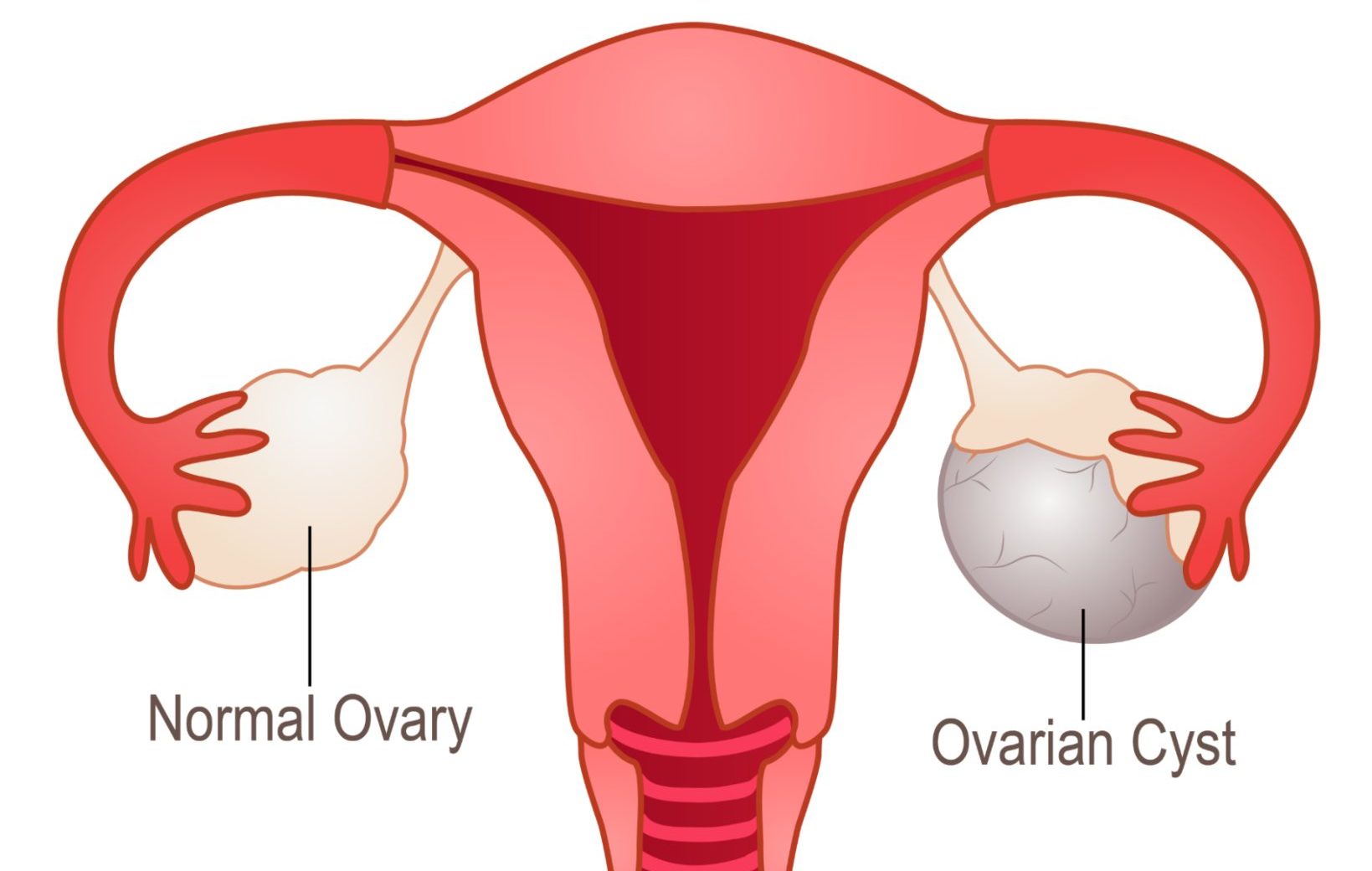Ovarian Cyst Removal Treatment in Dubai
Ovarian Cystectomy
Ovaries are a part of the female reproductive system located in the lower abdomen. They are placed on both sides of the uterus. There are two ovaries that produce hormones progesterone and estrogen as well as eggs. Ovaries are responsible for controlling the development of female body characteristics such as hair, body shape, and breasts. They also regulate pregnancy and menstrual cycle.
Over time, a fluid-filled structure or sac can be developed on one of the ovaries. This sac is called a cyst and many women, during their lifetime develops at least one cyst. Cysts are harmless and in most of the cases, they cause no pain or any symptoms. However, cysts may or may not represent a neoplasm or tumor. If it appears to be a tumor, it may be malignant or benign.

What are the Signs and Symptoms of Ovarian Cyst ?
In most cases, ovarian cysts do not show any signs of discomfort. But the symptoms can appear if the cyst tends to grow. It may include- Painful intercourse
- Lower back pain
- Vomiting and nausea
- Pelvic pain during or before periods
- Abdominal swelling or bloating
- Indigestion
- Urinary urgency
- Feeling full only after eating a small amount
How is an ovarian cyst diagnosed?
The doctor may recommend different diagnostic tests before ovarian cystectomy:- Ultrasound test: Done to detect the ovarian cysts.
- CA-125 blood test: though not specific, high levels can be suggestive of a malignancy..
- Other imaging tests like MRI scan, CT scan and Doppler flow studies are conducted.
What is ovarian cystectomy?
It is a surgical procedure which is done to remove an ovarian cyst or tumor by preserving the ovary and fertility. Ovarian cysts are the fluid-fill sacs that are formed in the ovaries and surrounded by a very thin layer. Any ovarian follicle which is larger than 3 centimeter is considered as an ovarian cyst. There are two types of ovarian cysts formed in the body:- Functional ovarian cysts: These are harmless and most common type of cysts in females. The functional cysts are sac like structures formed on the surface of the woman’s ovary during or after the ovulation cycle.
- Pathological cysts: These cysts are formed in the ovary but not a part of ovulation cycle. The pathological cysts may be benign or malignant.
When is an ovarian cystectomy performed?
Your gynaecologist will recommend you the ovarian cystectomy if you have any of these signs and symptoms- If the ovarian cysts size is larger than 6-7 cm.
- If any ovarian masses are present in both the ovaries
- Ovarian cancer
- If the ultrasound recommends that the cyst formed is not a simple functional cyst.
- If any complications like rupture appear.
- The surgeon will make three or four small incisions in the abdomen to insert laparoscope and other surgical instruments to remove the cysts.
- A laparoscope with a video camera at its end is inserted in to one of the incision to view the internal organs on a monitor in the operating room. The images displayed on the monitor helps the surgeon to guide the surgical instruments
- The cyst is separated from the healthy ovarian tissue and removed. It the cyst involves the whole ovary, it may not be possible to separate the cyst alone, necessitating the removal of the ovary. Sometimes, if a cyst cannot be removed completely then either partial removal or aspiration is done.
- After the completion of the procedure, the incisions are sewed with dissolvable stitches.
Precautions:
- Resume your normal daily routine activities
- Refrain from performing strenuous activities such as heavy lifting in gym or sports
- Do not lift anything that weighs more than 5 kgs. for 2- 4 weeks post-surgery
- Consult the doctor if you have symptom like abdominal pain, sudden chest pain, breathing trouble.
- Take medication as directed by the physician accordingly
Advantages of laparoscopic ovarian cystectomy:
- Shorter stay in the hospital
- Recovery is very fast
- Pain and discomfort after the surgery is very less
- Less risk of infections
- Fewer side effects.

